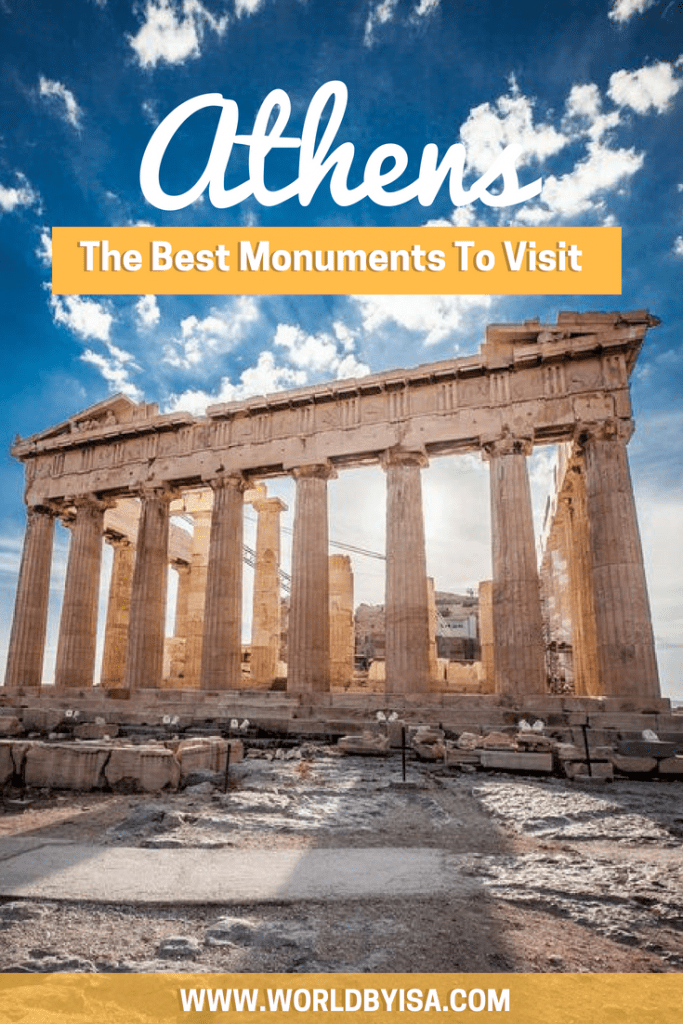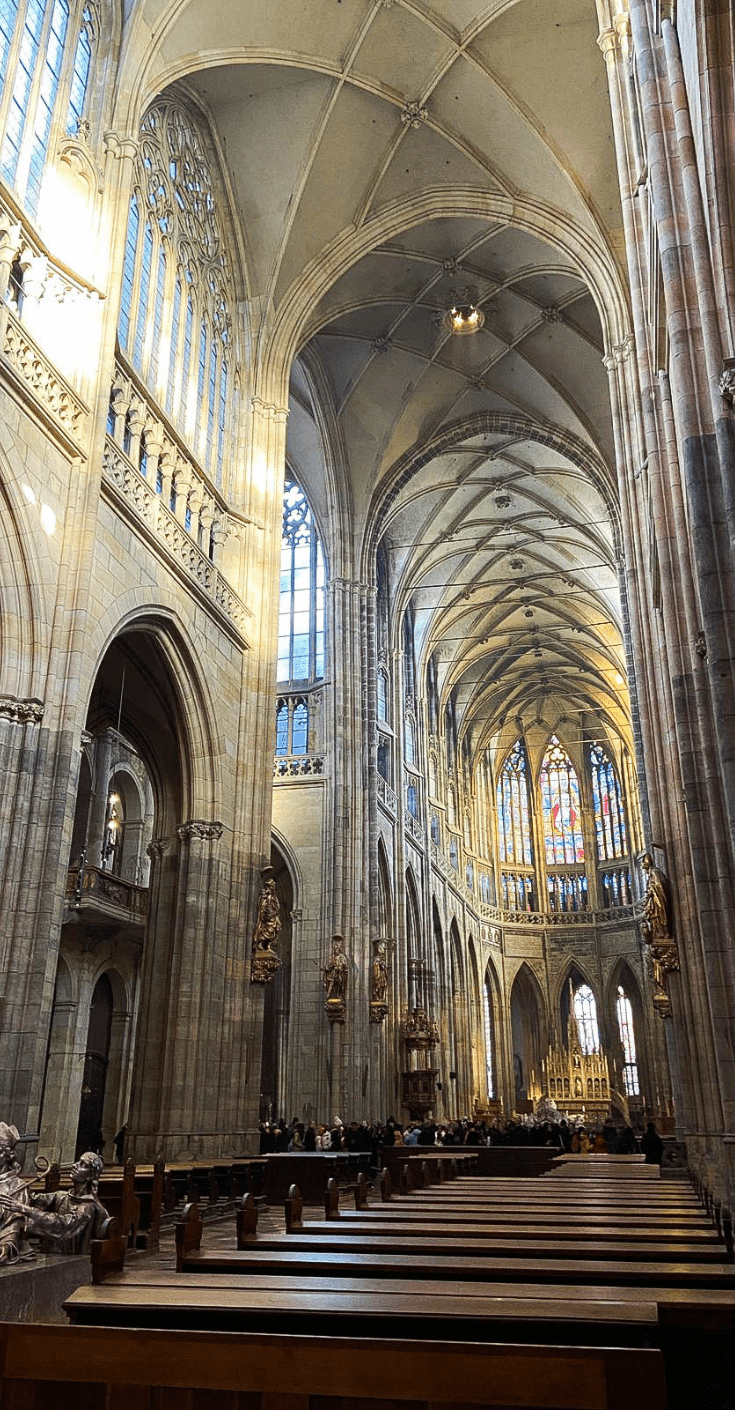Best Greek Monuments to Visit in Athens
Athens is basically like a giant open-air museum, where every corner you turn has some incredible ancient Greek ruins. Imagine strolling through the same streets where philosophers like Socrates and Plato once walked—pretty cool, right?
The city is the cradle of democracy, and one of the oldest cities in the world, the history of Athens, is the history of theater, politics, philosophy, sociology and so many other sciences that are, or should be, part of our society’s common knowledge.
Whether you’re all about getting that perfect Insta shot or you’re just looking to explore, the ancient landmarks as a way to learn more about history, these best Greek monuments in Athens are an absolute must on your Athens bucket list.
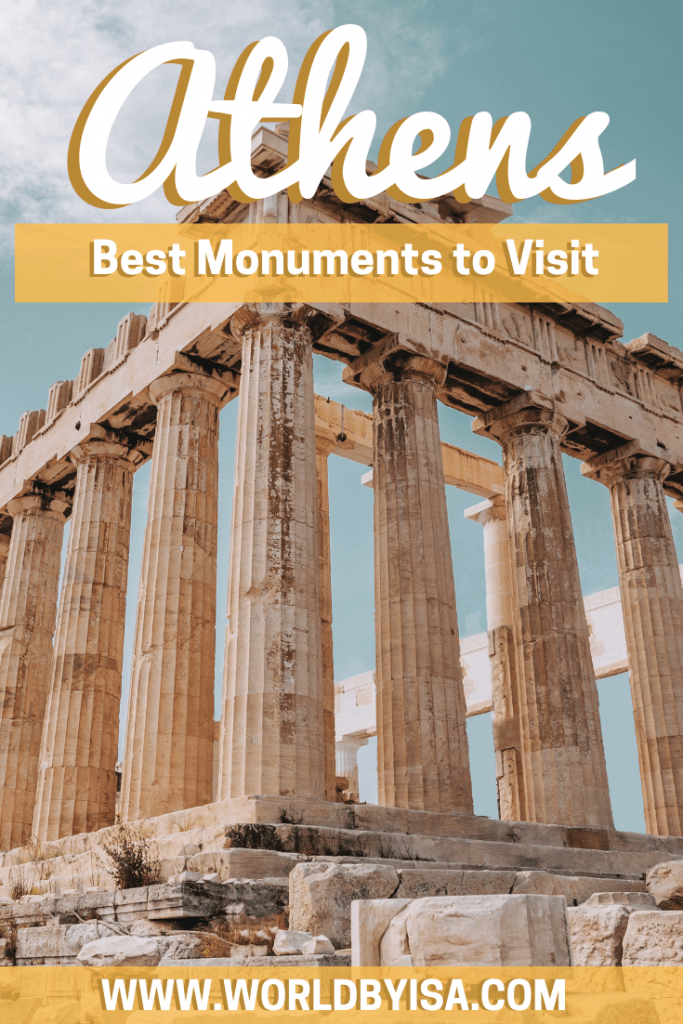
Disclosure: This post does contain affiliate links that I earn a small commission for at no extra cost to you. Any purchases you make through my links help keep the site running. Thanks in advance for your support!
Quick links to plan your visit to the best Greek monuments in Athens
Get around Athens
・Car: Secure the best rates with DiscoverCars.
・Trains: Check Omio for schedules and book your ticket online.
・Ferries: Check schedules and book your ferries through DirectFerries (Ferries to and from Athens, Mykonos, Paros, and Santorini)
・Transfer: Book your private airport transfer.
・Transfer to and from Piraeus Port: Book your private transfer here.
・Athens Sightseeing Bus: An easy way to navigate the city.
Recommended Accommodation
・Golden City Hotel – Affordable and offers good service. Located close to the metro station.
・Syntagma Luxury Living One “LL1” Apartments – Located close to Syntagma Square.
・Royalty Hotel Athens – Overlooking Monastiraki Square.
・Electra Palace Athens – Luxury Hotel with a terrace offering a beautiful view of the Acropolis.
Recommended for Visiting the Best Greek Monuments in Athens
・Mythological Tour.
・Ancient Greek Theater Performance.
・Greek Food Tour with Tastings.
・
・
The famous Greek landmarks in Athens aren’t just for history buffs; they’re for anyone who loves a good story, and that’s why I decided to visit the best Greek monuments in Athens, with a company called Alternative Athens.
Their Mythological tour not only guides you through these beautiful landmarks of the past but they tells you the stories behind them and teaches you about Greek Mythology as well.
History of Athens
The timeline of Athens goes back to the 11th and 7th millennium BC, making Athens one of the oldest continuously inhabited cities in the world.
It was initially ruled by kings, but over time, it transitioned into an aristocracy, where power was held by a few wealthy families. Around the 7th century BCE, Athens faced social unrest due to the growing divide between the rich and the poor. To address these tensions, the city reformed its political system, gradually giving more power to its citizens, which eventually laid the groundwork for democracy.
As Athens became more democratic, it also began to flourish culturally and militarily. The Golden Age of Athens, also known as the Age of Pericles, was the pinnacle of Athenian power and culture. During this time, Athens became the center of art, learning, and philosophy in the ancient world.
The achievements of this period left a lasting legacy, making Athens a symbol of ancient Greek civilization.
Best Greek Monuments in Athens to visit

Temple of Olympian Zeus
Dedicated to Zeus the king of the Olympian gods, the construction of the Temple of Olympian Zeus, also known as Olympieion, began in the 6th century BC but was only concluded around 638 years later in the 2nd century AD by the Roman Emperor Hadrian.
With 104 gigantic columns, this was the biggest temple in Greece and included one of the biggest cult statues in the world!
Nowadays, however, after barbaric attacks and earthquakes, the temple is partially destroyed, and only sixteen of its gigantic columns remain standing.
The entrance to the temple used to be marked by the Hadrian’s Arch, the arch was built to celebrate the arrival of the Roman Emperor Hadrian. Part of the arch survived during the years and can still be seen nowadays.
Top Tip: Close to the Temple of Olympian Zeus, you can find a park that contains the ruins of the Themistokles’ wall and the ancient Roman baths. They are located at the side of the road on Vassilissis Amalias Avenue and are free to visit.
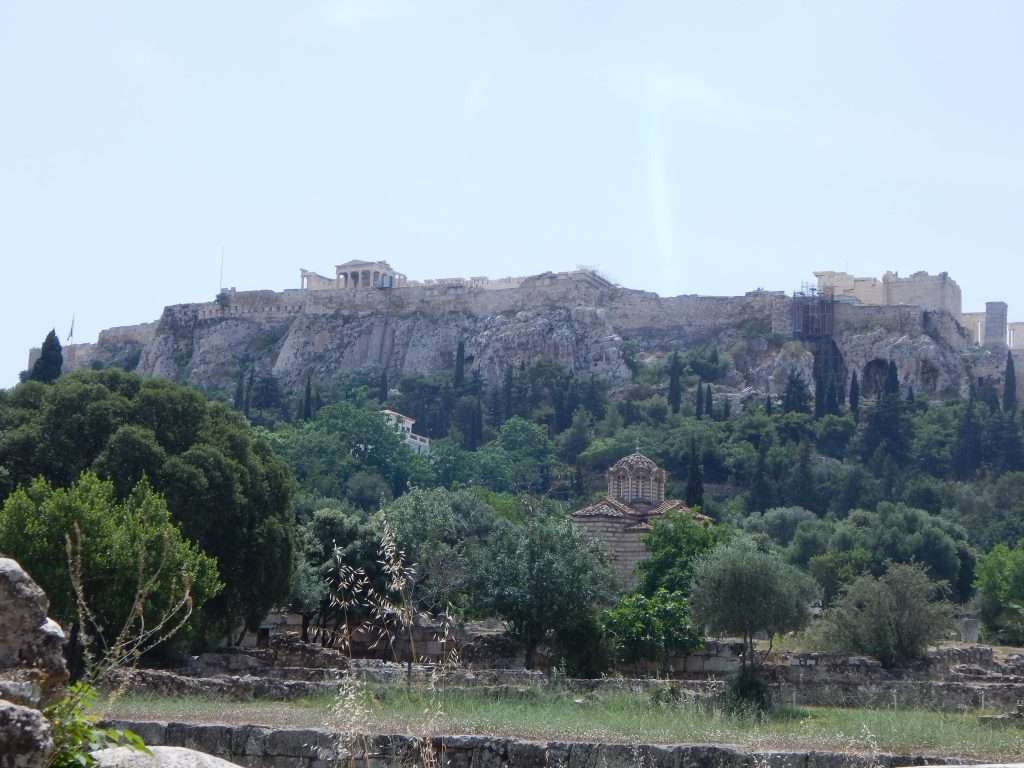
Acropolis
The word acropolis means something like a High City or a City Built in a High Area in Greek. Many cities in ancient Greece had an acropolis but the most famous and iconic one is the Acropolis of Athens, whose complex and artistic architecture still intrigues us nowadays.
After the victory over the Persians and the establishment of democracy, Athens became one of the strongest city-states in the world.
With so many artistic groups flourishing at that time, the then Athenian statesman Pericles, with the help of the sculptor Pheidias, started to turn the simple rocky hill into one of the most important monuments we ever had.
Different than most people think, although the Acropolis is a citadel, it was not an area where people lived, it was actually a political, religious, and intellectual area.
What to see in the Acropolis of Athens
Propylaea: The beautiful gateway that serves as the entrance to the Acropolis. It was built in 437 BCE, by architect Mnesicles. The gate has five doors, being the central one the culmination of the Sacred Way, the road that linked the Acropolis to the city of Eleusis. Although the Propylaea was not a fortified building, it had a security function.
Temple of Athena Nike: A temple dedicated to Athena and where she was worshipped as the Goddess who stood by the Athenians in times of war. It is located at the entrance of the Acropolis, next to the Propylaea, in the southwest of the Acropolis plateau, and is still well preserved. Inside the temple, in ancient times, you would find a wooden statue of Athena, holding a helmet in one hand, a symbol of war, and a branch of the pomegranate tree in the other, symbolizing peace.
Erechtheion: Definitely one of the most beautiful temples in the Acropolis, and one of the most iconic due to the famous Porch of the Caryatids. Although it was created as another temple for Goddess Athens, its name comes from Erechtheus, the demi-god, the mythical Athenian first king. The temple was also used to worship Poseidon, following the mythological dispute between him and Athena for the patronage of the city of Athens.
Parthenon: Finally the symbol of Greece, and the best example of ancient Greek architecture in the World: Parthenon, sitting on the top of the Acropolis, was also dedicated to Athena and houses a statue made of ivory and gold of the Goddess. Despite the damage, the Parthenon suffered over the centuries, its structure remains almost intact, preserving most of its columns.

Ancient Agora
In ancient Greece, Agora used to be a public space, where people used to gather to meet each other, do groceries, and do other activities of normal daily life. The ancient Agora of Athens has many monuments, temples, and buildings.
The most notable ones are definitely the Stoa of Attalos, a large covered walkway or portico, built by the King Attalos II of Pergamon who ruled between 159 BC and 138 BC. The building was used for political and administrative reasons, housing different offices in its many rooms. It is also believed that this is the place where Socrates’ trial took place in 399 BC.
Fun Fact: The Stoa of Attalos was a gift to the city of Athens for the education that King Attalos, ruler of the city of Pergamon, received in the city. He studied under the philosopher Carneades.
The Stoa of Attalos was later destroyed and remained in ruins until 1956 when it was completely rebuilt and turned into a museum that exhibits a collection related to Athenian democracy.
Another famous and impressive building in the Ancient Agora site is the temple of Hephaestus, sitting on top of Agora Hill. The Temple of Hephaestus is the most well-preserved temple in ancient Greece, which remains largely as it was first built.
In the 7th century, the temple of Hephaestus was converted into a Greek Orthodox church, remaining like so until 1834, which helped save the temple from destruction.

Hadrian’s Library
Located next to the Roman Agora, and Built in the same format as a Roman Forum, is the Hadrian’s Library. Despite the proximity, which makes many people think Hadrian’s Library is also part of the Agora, this complex of buildings was actually built much later.
Emperor Hadrian founded it in AD 132 and in its Golden Era, the Hadrian’s Library used to have a big room where rolls of papyrus (the ancient version of books) were kept, next to this room, were the reading rooms while the corners were lecture halls.
Did you know? Later, during Byzantine times, three churches were built on the same site, one of which, was the first cathedral of Athens. Later, a fourth church was built against the north facade, but only the ruins of the first three churches remain preserved nowadays.

Panathenaic Stadium
The Panathenaic Stadium is one of the ancient buildings that are still used nowadays thanks to restoration. Built on the site of an ancient Greek stadium dating back to 329 BC, the Panathenaic Stadium is deeply connected to the tradition of the Olympic Flame and the Olympic Games.
Built to host the Panathenaic Games, a religious festival dedicated to the Athena goddess, the event counted with ceremonies and athletic competitions.
Did you know? It has a capacity for more than 60,000 people, making the Panathenaic Stadium, the biggest monument in Ancient Greece, and the only stadium made of marble in the world.
The stadium was completely rebuilt in its original form and was put into use again in the first International Olympic Games in 1896. Nowadays it is the scenario of concerts and shows during the Summer.
Kerameikos
Originally divided into two sections, the Inner Kerameikos which used to be the potters’ quarter within the city, and the Outer Kerameikos, located outside the city wall, which used to be the public graveyard.
The area became famous after Pericles delivered his funeral oration in 431 BC. After the Peloponnesian War, many civilians belonging to rich families and warriors were buried in this cemetery and their graves can still be seen nowadays.
Kerameikos now counts on a museum that displays the biggest collection of burial-related artifacts of entire Greece, that goes from small toys and jewelry to large-scale marble sculptures that used to be placed in Athenian graves.
Mythological tour in Athens
When I was in the city, I had the chance to visit the best geek monuments in Athens with Alternative Athens and learn more about them during one of their tours. Alternative Athens offers different tours and as the name says, they are not so conventional.
I went on the Mythological tour, which I loved! The tour began in the Temple of Olympian Zeus, the unofficial entrance of ancient Athens, where we listened to our first of many tales of Greek Mythology. As we made our way through the ruins, we learned about different myths and how they are linked to the real life of ancient Athenians, their society, heroes, and Gods.
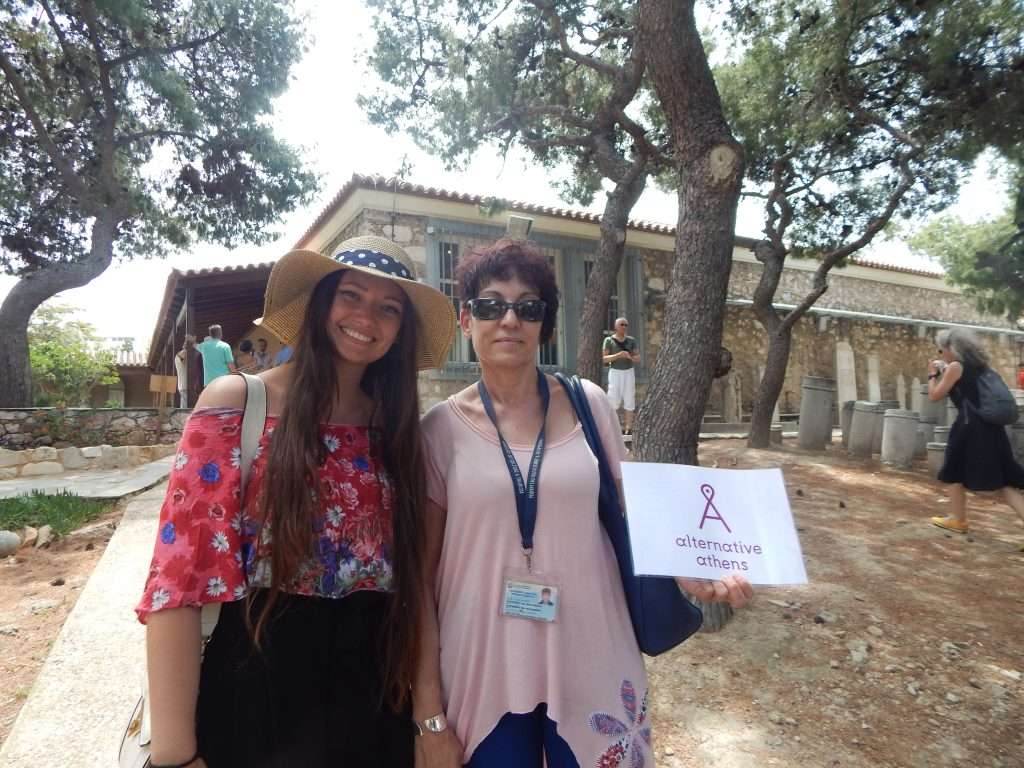
The tour ended in the Kerameikos cemetery, where we learned about the fall of this great and legendary Empire that was Athens. After listening to part of the speech of Pericles, known as the Funeral Oration, it makes us reflect on everything we learned during the tour, and how so many parts of this history are still present in our lives.
Listening to the myths as you look at the ancient Greek buildings completely immerses you in history, making everything more tangible. Honestly, for me, this tour was a life experience.
To visit any of these monuments in Athens, it is necessary to buy a ticket, buying the combo ticket, for which I paid €30 (I’m writing this in 2018) gives you entrance to all the main ruins and museums. We most of the ruins we visited with Alternative Athens during our Mythological tour, but there are others included in the ticket that can be visited after the tour on your own.
More About Greece
- 3 Days in Athens Itinerary
- Visiting the Acropolis of Athens
- Best Beaches Near Athens to Visit
- Acropolis Museum Guide
Greece Travel Essentials
- FLIGHT TICKET: Get the best flight deal with Skyscanner.
- ACCOMMODATION: Find the perfect accommodation on Booking.
- VISA: Apply for a Visa on iVisa.
- eSIM: Stay connected throughout your trip with Airalo eSim. It offers packages from 7 to 30 days for accessible prices.
- PRIVATE TRANSFER: Book your private airport transfer.
- RENT A CAR: Find the best rates on DiscoverCars.
- GUIDED TOUR: Find the best tours in Italy on GetYourGuide
Disclosure: Thanks to Alternative Athens for giving me the opportunity to experience this amazing tour and for gifting me two tickets for the Mythological tour. As always, all opinions are my own.
